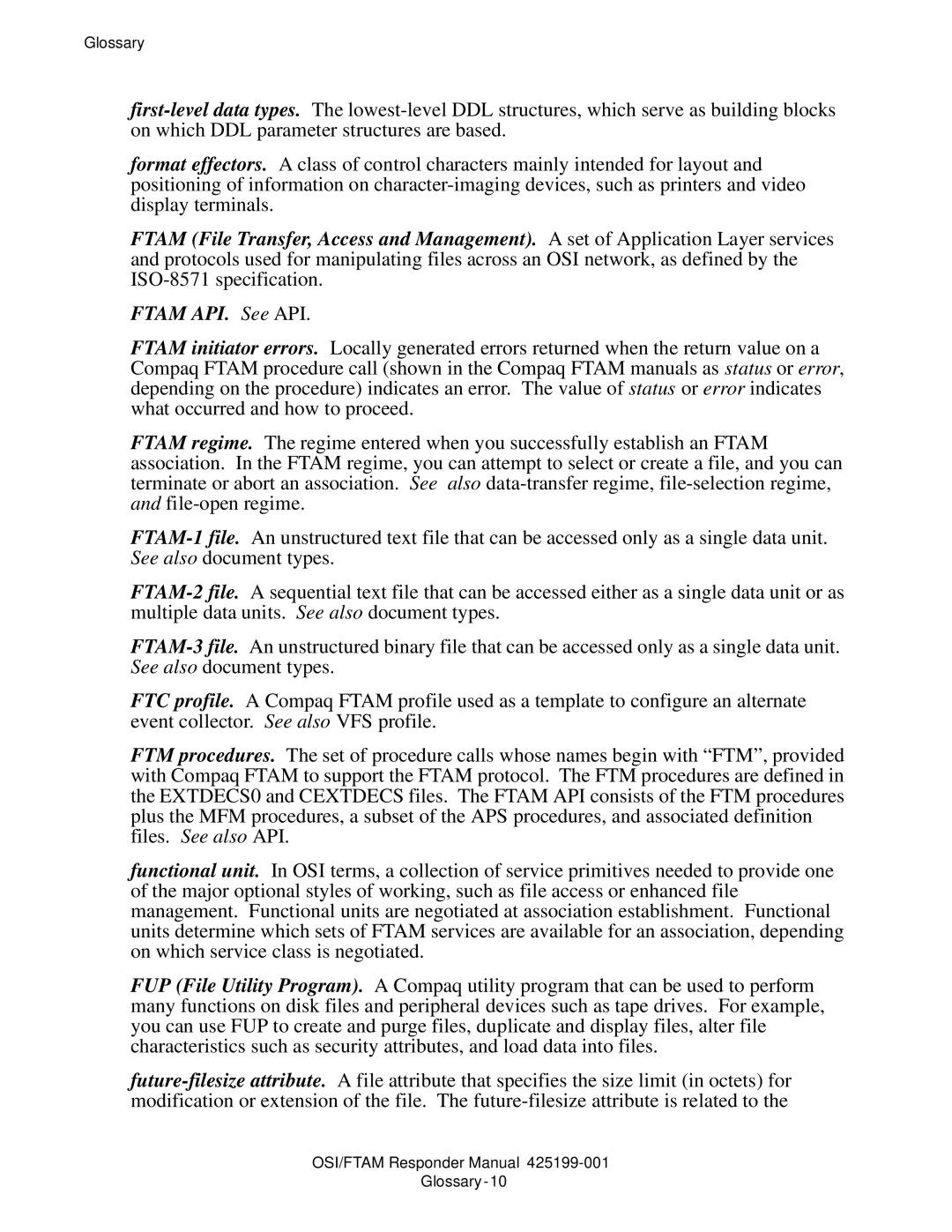Glossary
format effectors. A class of control characters mainly intended for layout and positioning of information on
FTAM (File Transfer, Access and Management). A set of Application Layer services and protocols used for manipulating files across an OSI network, as defined by the
FTAM API. See API.
FTAM initiator errors. Locally generated errors returned when the return value on a Compaq FTAM procedure call (shown in the Compaq FTAM manuals as status or error, depending on the procedure) indicates an error. The value of status or error indicates what occurred and how to proceed.
FTAM regime. The regime entered when you successfully establish an FTAM association. In the FTAM regime, you can attempt to select or create a file, and you can terminate or abort an association. See also
FTC profile. A Compaq FTAM profile used as a template to configure an alternate event collector. See also VFS profile.
FTM procedures. The set of procedure calls whose names begin with “FTM”, provided with Compaq FTAM to support the FTAM protocol. The FTM procedures are defined in the EXTDECS0 and CEXTDECS files. The FTAM API consists of the FTM procedures plus the MFM procedures, a subset of the APS procedures, and associated definition files. See also API.
functional unit. In OSI terms, a collection of service primitives needed to provide one of the major optional styles of working, such as file access or enhanced file management. Functional units are negotiated at association establishment. Functional units determine which sets of FTAM services are available for an association, depending on which service class is negotiated.
FUP (File Utility Program). A Compaq utility program that can be used to perform many functions on disk files and peripheral devices such as tape drives. For example, you can use FUP to create and purge files, duplicate and display files, alter file characteristics such as security attributes, and load data into files.
